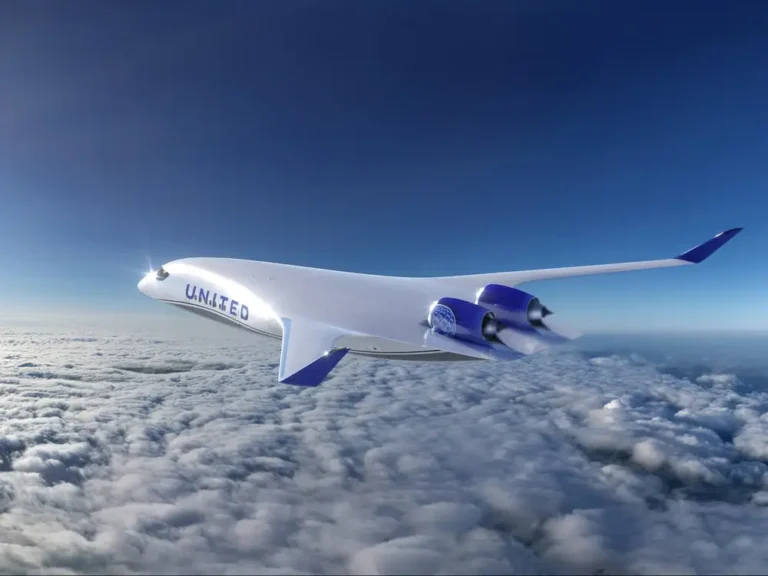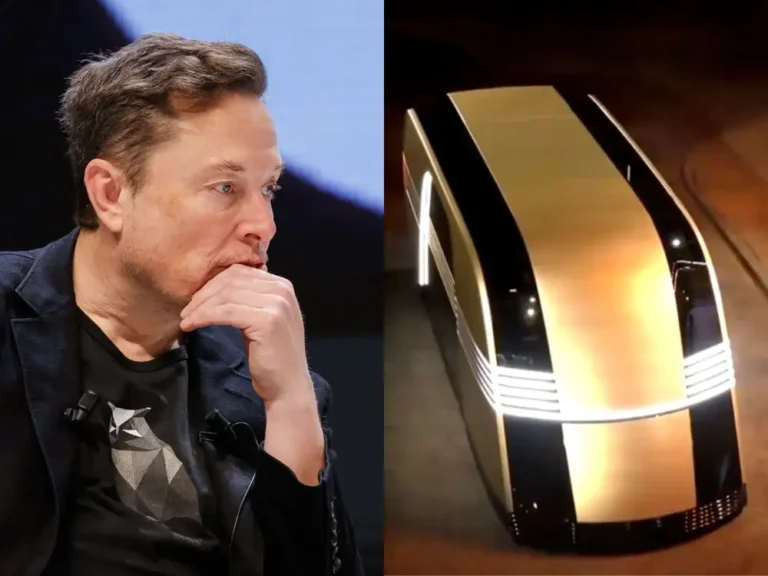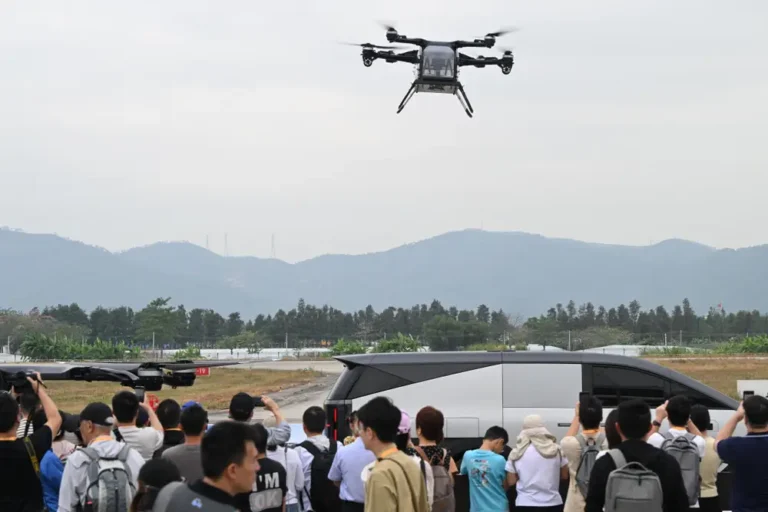I drove Nissan’s new $50,000 electric SUV. I loved its looks but was frustrated by how slow it charges.
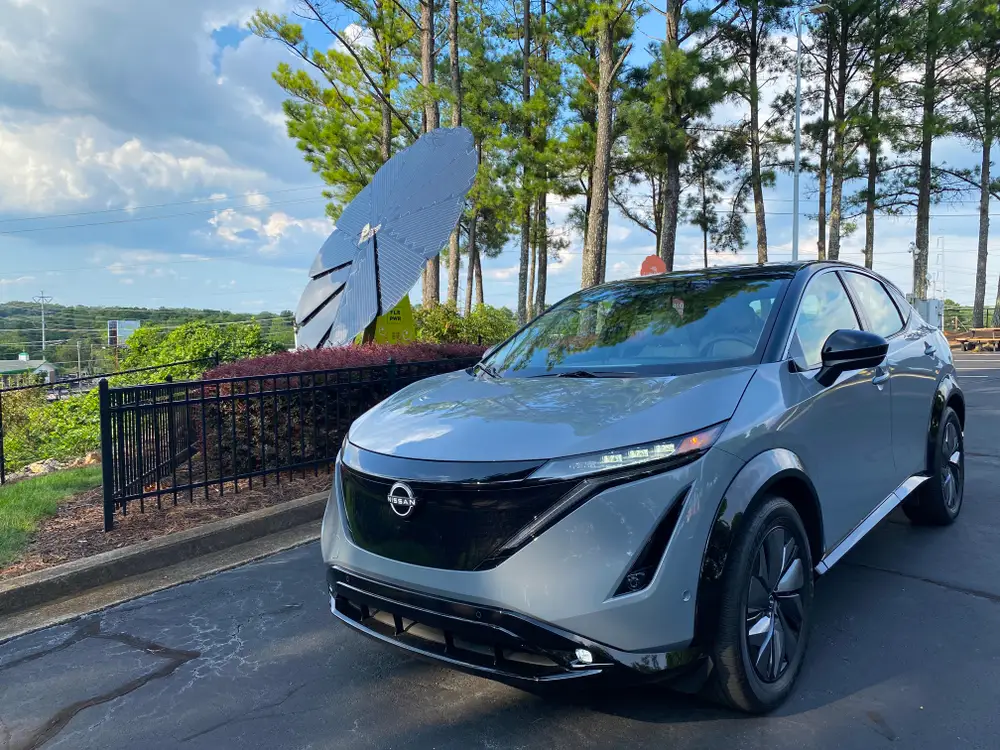
A 2024 Nissan Ariya Empower+ EV parked in front of a smart solar panel that tracks the sun.
You might not know it, but Nissan is one of the top-selling EV brands in the world.
Since the launch of the groundbreaking Leaf EV in 2010, Nissan has sold more than 1 million electric vehicles globally.
However, the electric vehicle landscape has grown exponentially more competitive over the past decade.
In 2023, Nissan launched the Ariya SUV as a follow-up to the Leaf to compete against the slew of new electric compact crossovers that have hit the market in recent years, such as the Volkswagen ID.4, Hyundai IONIQ5, Toyota BZ4X, and Tesla Model Y.
I recently spent a week driving around the streets of suburban Atlanta in a 2024 Nissan Ariya.
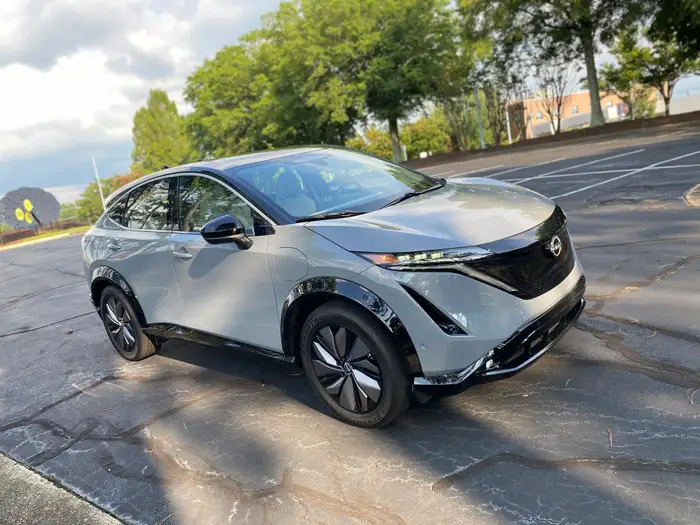
The Nissan Ariya Empower+ EV SUV in gray.
I was impressed by the Ariya EV’s elegant styling, its quiet and comfortable cabin, and competitive pricing.
However, I felt a little let down by the its low peak charging rate and a few counterintuitive design choices in the cabin.
My test car came to $50,440.
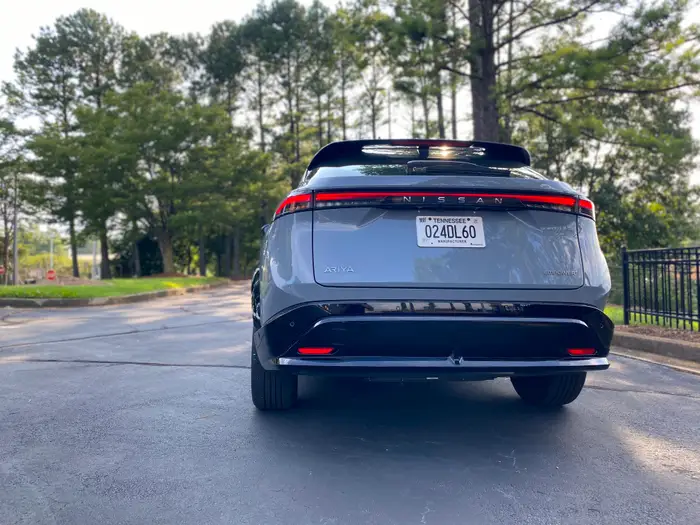
The 2024 Nissan Ariya Empower+.
For 2024, Nissan slashed the prices of models across the Ariya lineup to better position it to compete in the marketplace.
The starting price of the base front-wheel-drive Ariya Engage fell to $39,590. All-wheel-drive adds another $4,000.
At the other end of the spectrum is the top-spec, all-wheel-drive Ariya Platinum+ e-4FORCE, which starts at $54,190.
My well-equipped front-wheel-drive Empower+ test car also received a $6,000 discount for 2024 and carried a starting price of $47,690.
Freight fees and a couple of cosmetic options pushed the as-test price past the $50,000 mark.
The Ariya is a good-looking car.

The 2024 Ariya EV from the side.
The Nissan design team did a good job with the Ariya’s aesthetics. It strikes a balance between being edgy enough to feel modern and futuristic and subtle and restrained enough to avoid being off-putting.
Up front, the Ariya’s styling is dominated by a large, solid piano black grille.

The 2024 Nissan Ariya EV.
The black grille features a large illuminated Nissan logo and is flanked by LED headlights and running lights.
Each of Ariya’s LED headlights consists of four 20-millimeter mini-projectors.
The Ariya’s rear end is highlighted by a dramatic, almost coupe-like roofline and large spoiler.

A 2024 Nissan Ariya Empower+.
A large, single-piece LED light strip runs across the width of the rear facia.
The Ariya comes with 19-inch alloy wheels with removable plastic aero covers.

The Ariya’s 19-inch wheels.
The top-spec all-wheel-drive Platinum+ e-4ORCE trim can be optioned with larger 20-inch alloys.
It’s the exact same length as the Rogue.

The 2024 Nissan Ariya Empower+ EV in gray.
Front-wheel-drive Ariyas have 6.3 inches of ground clearance, while all-wheel-drive variants get 6.7 inches.
Those figures are on par with those of rival EVs like the VW ID.4 and Hyundai IONIQ5, but they fall short of Rogue’s 8.2 inches.
My single-motor test car touted 238 horsepower.
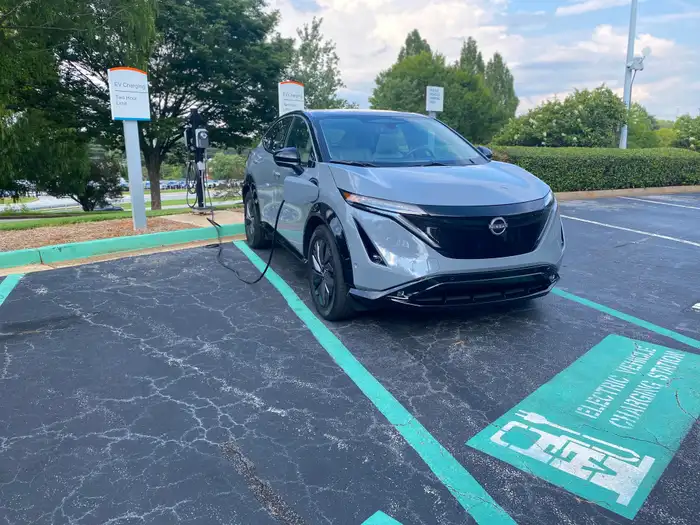
The Nissan Ariya at a charger.
While entry-level Engage trim units get a 66 kWh pack, all other Ariyas are equipped with the larger 91 kWh pack.
My Ariya Empower+ test car had a single electric motor mounted to the front axle, producing 238 horsepower and 221 lb. ft. of torque.
With the addition of a rear axle motor, all-wheel-drive variants can be had with as much as 389 horsepower.
Ariya’s peak DC fast charging rate is a bit disappointing.
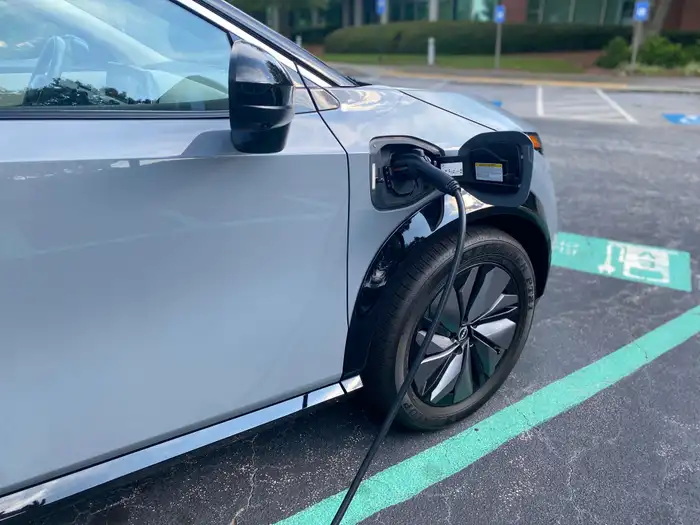
The Ariya plugged in for a charge.
The Ariya’s 130kW DC fast charging rate allows it to charge from 20% to 80% in 40 minutes.
That falls behind rivals like the Volkswagen ID.4’s 175kW DC fast-charging speed, which allows it to charge from 10% to 80% in about 30 minutes.
Both vehicles trail the Hyundai IONIQ5, which can charge from 10% to 80% in just 18 minutes using 350kW DC fast charging, one of the fastest charging rates out there.
My test car was rated for a solid 289 miles of range. With some gingerly applied throttle and the regenerative braking turned up, I found I could easily surpass the 300-mile mark.
The Ariya was smooth and relaxing to drive.
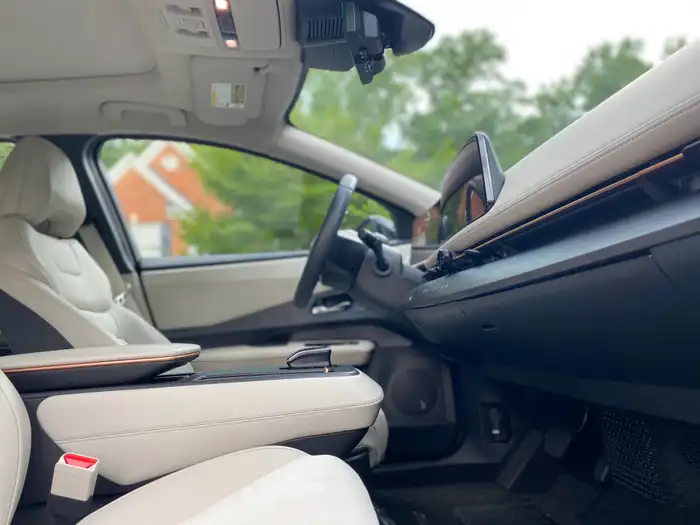
The Ariya’s front cabin.
The driving experience was relaxed and carefree.
With 238 horsepower on tap to lug around 4,600 lbs of mass, the Ariya is no barn burner.
But it’s far from underpowered. What power it does have, the Ariya uses efficiently and effectively.
There’s plenty of pep off the line, and acceleration continues linearly up to highway speeds.
According to Car and Driver, the Ariya Empower+ can go from 0 to 60 mph in a more-than-respectable 7.5 seconds.
Inside, the cabin is quiet, roomy, and exudes minimalist sophistication.
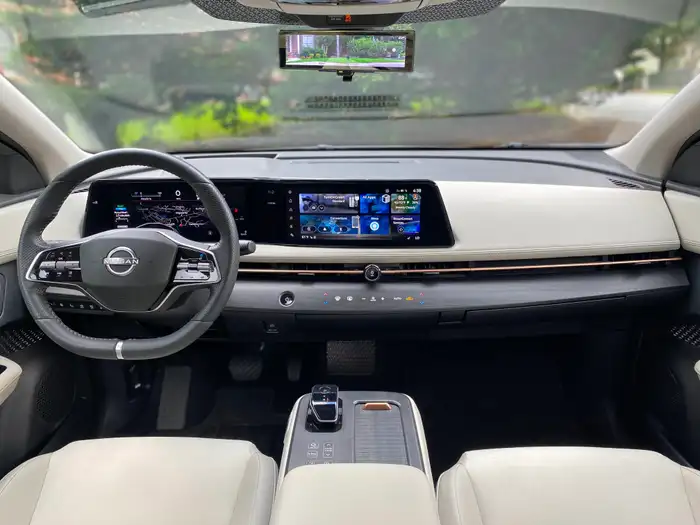
The Ariya’s front dash.
The Ariya’s exterior styling looks good, but the interior looks even better.
Not only is overall material quality solid, but there’s also a good diversity of differing textures in the major touchpoints around the cabin, including faux leather, imitation open-pore wood, and copper accents.
My test car was equipped with a power panoramic moonroof.

The Ariya’s panoramic moonroof.
The Ariya is equipped with Nissan’s zero gravity seats.
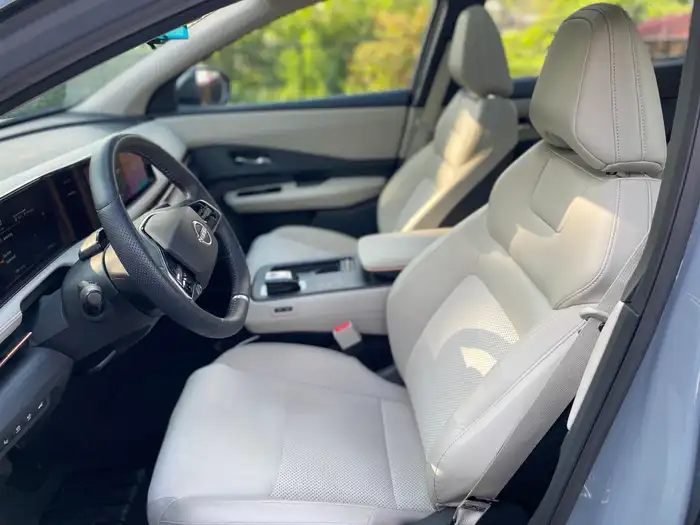
The Ariya’s driver’s seat.
The seats, designed to combat driver fatigue through improved posture, provided great support and were incredibly comfortable.
In front of the driver is a heated, leather-wrapped steering wheel.

The Ariya’s steering wheel.
The flat bottom steering wheel was well weighted and perfectly molded to my hands.
In front of that is a configurable digital display.
The centerpiece of the Ariya’s front dash is a 12.3-inch touchscreen that houses its infotainment and climate control functions.

Wireless Apple CarPlay on the Ariya.
The Ariya runs a version of Nissan’s corporate infotainment system, which is solid and fairly easy to use but not the industry’s best.
On the plus side, the system comes standard with wireless Apple CarPlay and wired Android Auto.
In addition, the shortcut touch buttons to the left of the screen for functions such as CarPlay and the climate controls were very helpful.
The screen also houses a surround-view camera system and auto-parking system
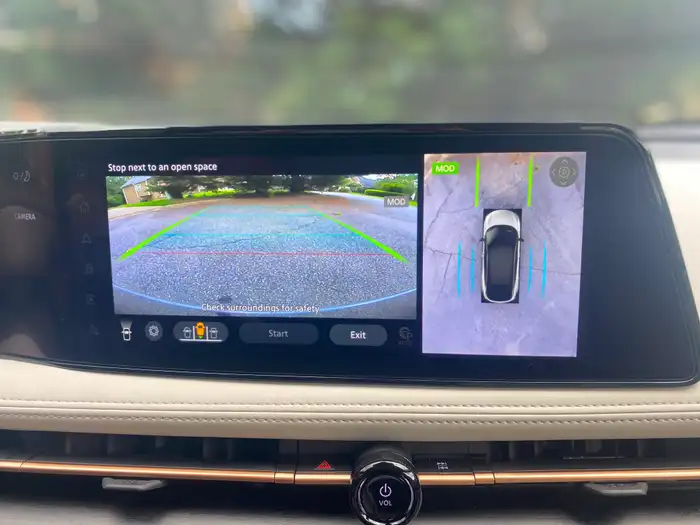
The Ariya’s surround-view camera and auto parking system.
The Ariya’s auto park system is actuated with a button next to the shifter on the center console.
Like the climate controls on the front dash, the buttons on the center console are embedded in the faux wood accent.
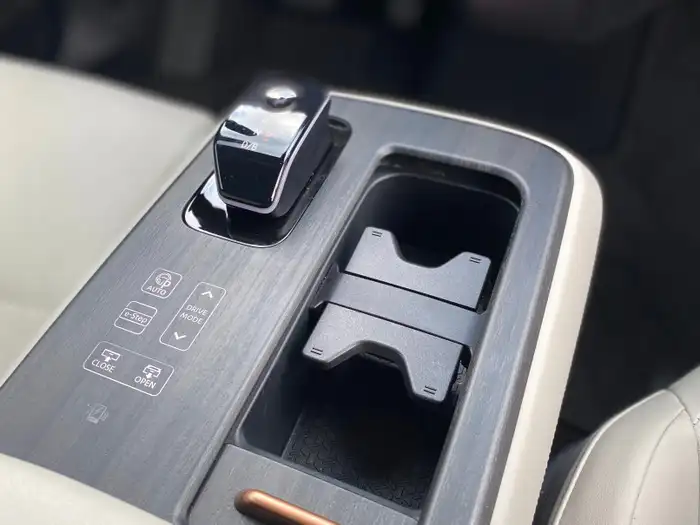
The Ariya’s center console with capacitive touch controls.
The center console is also home to the Ariya’s toggle-style shifter and a pair of cup holders.
At the bottom of the center console, there are a pair of USB plugs and a slot for your mobile device.
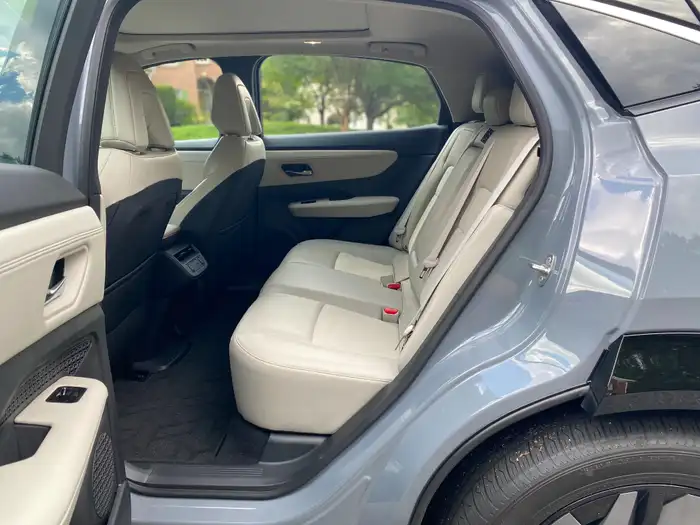
The smartphone holder and USB plugs on the Ariya’s center console.
The coolest part of this setup is a cable wrap next to the mobile device slot that keeps your charging cords from becoming a tangled mess in the footwell.
The Ariya’s second row offers 37 inches of legroom.
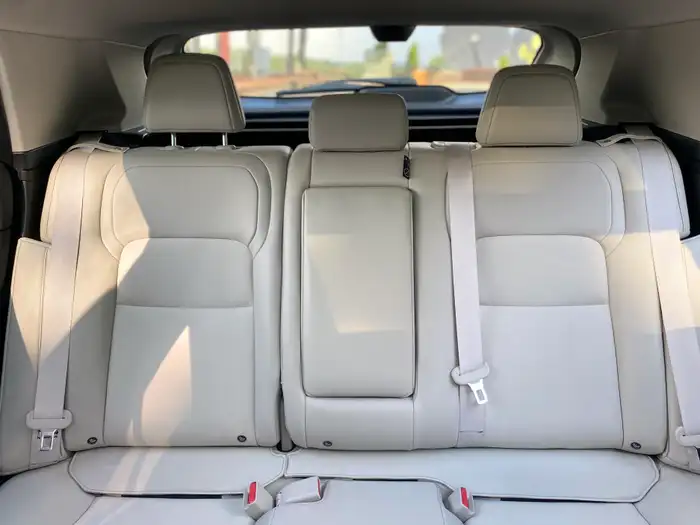
The Ariya’s rear cabin.
That’s about four inches less than the Rogue and two inches short of the IONIQ5.
The sloping rear roofline, while aesthetically pleasing, negatively affects the rear headroom and rearward visibility.

The Ariya’s back seats.
The Ariya offers an inch less headroom than the Rogue, but about 0.8 inches more than a comparable IONIQ5.
The combat limited rear visibility, the Ariya is available with a rear vision camera.

The Ariya’s rear vision camera.
The camera is located near the top of the ear windshield and projects an image onto the rearview mirror above the front dash.
However, some elements in the cabin exist purely to look snazzy but contribute little or even detract from the user experience.
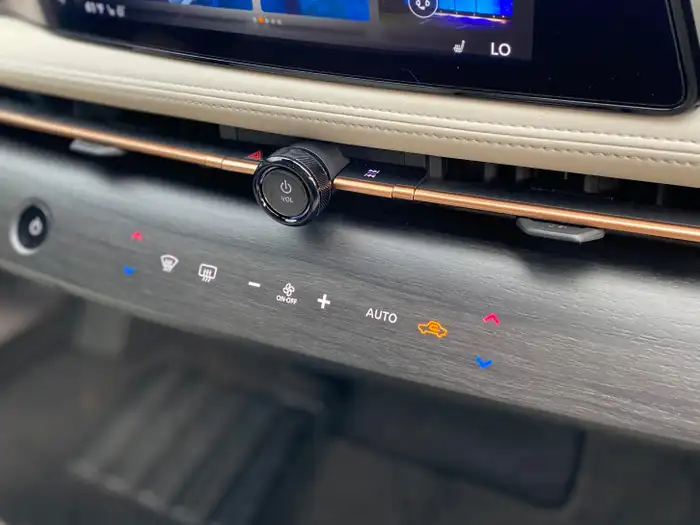
The Ariya’s capacitive touch climate controls.
For example, designers decided to embed the Ariya’s primary climate controls into the imitation open-pore wood accent on the front dash. The capacitive touch controls look great, but a physical button would make them a lot easier to use on the fly.
The Ariya is equipped with a retractable tray table and story drawer.
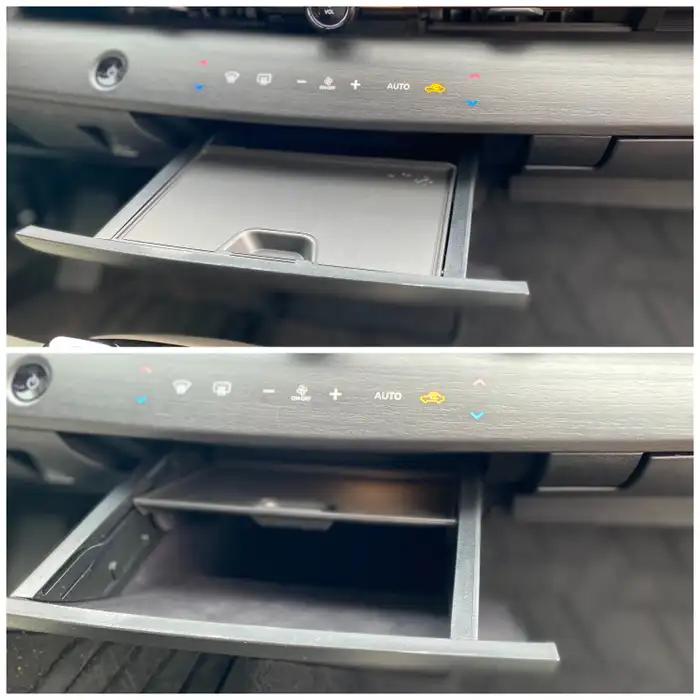
The Ariya’s power tray table.
According to Nissan, the power retractable tray offers additional utility for those wishing to turn the Ariya into a mobile office.
However, I found the tray table useful only when the vehicle was stationary. When I drove around with my smartphone on the table, it slid around too much for comfort.
In addition, the motor used to actuate the tray table is kind of slow, and you have to hold down the controls, or it will stop moving.
And then there’s the Ariya’s power-operated sliding center console.
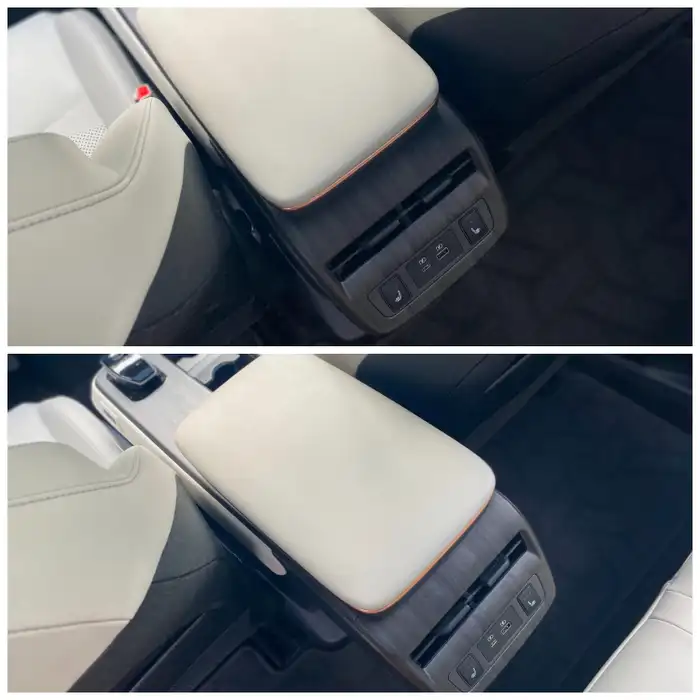
The Ariya’s power center console.
I’ve never seen this feature before. Nissan says it helps better tailor the shifter’s position to the driver. I’ve driven a few hundred different cars in my life, and the position of the shifter on the center console has seldom been an issue.
It’s a fun talking point, but ultimately, it’s much ado about nothing.
Open the power liftgate, and you’ll find 22.8 cubic feet of cargo space behind the rear seats.

The Ariya’s cargo compartment.
The Ariya’s stylish sloping rear roofline eats into its cargo capacity, which is nearly 10 cubic feet short of the boxier Rogue.
Fold the rear seats down, and the cargo room expands to 59.7 cubic feet.
One saving grace for the Ariya’s cargo compartment is Nissan’s Divide-N-Hide cargo system.

The Ariya’s Divide-N-Hide Cargo System.
The system, also available on other Nissan models like the Rogue, allows for the floor panels to be removed to create a deeper cargo well or for the panels to be placed into slots as cargo dividers.
The cargo dividers were handy during my grocery runs, preventing pallets of water from sliding into and crushing the produce.
Unlike many EVs, the Ariya does not have frunk under its hood.
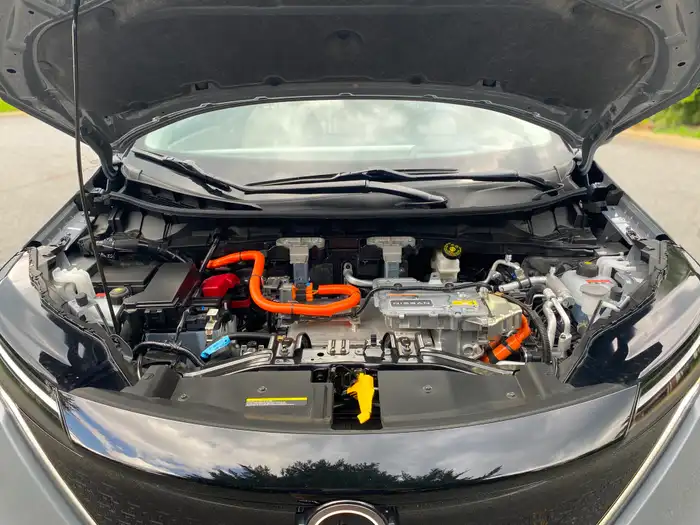
The electronics under Ariya’s hood.
Instead, Nissan chose to locate the electronics and mechanicals powering the Ariya’s climate control under the hood. This isolates the equipment’s noise and vibration away from the occupants, facilitating a quieter cabin.
The Ariya has a comprehensive suite of advanced driver assistance and safety features.

The Ariya’s driver’s area.
The Ariya comes standard with a host of safety and assistance tech, including automatic emergency braking with pedestrian detection, intelligent cruise control with distance control assist, intelligent forward collision warning, lane departure warning, intelligent lane intervention, blind spot warning, intelligent blond spot intervention, rear cross-traffic alert, rear automatic braking, intelligent driver alertness, traffic sign recognition, and Nissan’s ProPILOT Assist and Park hands-on driver assist system.
My Verdict: The Nissan Ariya is an attractive, state-of-the-art EV priced to compete.

The 2024 Nissan Ariya Empower+ EV SUV.
After a decade of selling affordable EV hatchbacks, Nissan took a step forward into the modern EV market with the Ariya.
Although Nissan may not have the same cache among EV shoppers as a Hyundai or Tesla, overlooking the Ariya would be a mistake.
Despite a less-than-ideal peak fast charging speed, the Ariya remains a capable EV with sophisticated styling priced to compete among the latest electric compact SUVs on the market.


